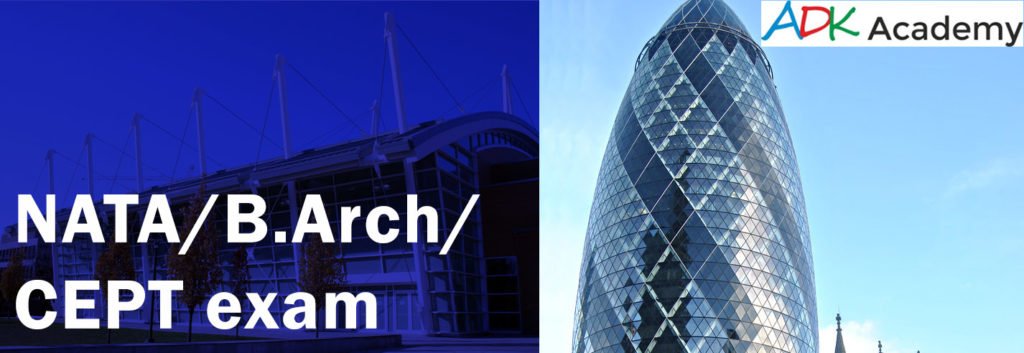
IIT Barch, CEPT and National Aptitude Test in Architecture (NATA) are an entrance exam for candidates wanting admission in undergraduate programmes in Architecture (5-year B.Arch. Degree).
Council of Architecture (CoA). conducts the NATA exam. IIT, conducts B.Arch exam and CEPT university conducts CEPT exam. Though information below is for NATA but Syllabus and pattern of exams is similar for IIT B.Arch and CEPT.
2020 which was to be conducted twice by CoA, in April and in May has been delayed due to Covid-19. Candidates can appear in either one or both the exams.
Online Classes
NATA Exam is conducted how many times per year
Twice a year, this year it will be conducted on August 1, 2020 and August 29, 2020t
is it in Offline / Online Mode?
Both, Drawing is offline and MCQ of Aptitude, Reasoning and PCM is online
Number of Applicants
32761 in 2019
Colleges accepting NATA result
339 colleges
Eligibility
Age Limit: None
Qualifications: Passed 10 + 2
Qualifying Marks: Minimum 50% in Physics, Chemistry, Math
Exam Duration
3 hour 15 minutes (135 minutes Drawing). 15 minutes break. 45 Minutes Aptitude, Reasoning, PCM. (195 minutes)
Offline Exam Part A Drawing
First Paper 125 Marks, 3 Questions (55 Marks + 35 Marks x 2 ), Total time 135 minutes
Online exam part b Aptitude, PCM & Reasoning
Second Paper 75 Marks, 50 Questions
PCM 15 Q x 1.5 M/Q = 22.5 Marks, Aptitude, Reasoning 35 Q x 1.5 M/Q = 52.5 Marks ), Total time 45 minutes
PCM = Physics, Chemistry, Math
Negative marking in NATA, validity, good score
No negative marking
Validity of score is 1 year
Good score in NATA is 120+ out of 200
Drawing exams evaluation
In paper and pencil only.
Marks are given for drawing skills of the candidate, their imagination and observation.
Candidate’s idea of composition, proportionality, color scheme with a larger perspective are evaluated.
NATA Drawing exam TIPS
• Sketch a provided object proportionally.
• Candidates will be judged on their drawing perspective.
• Light on an object and shadows.
• Form a structure out of given 3D objects.
• Form a 2D structure out of given shapes and forms.
• Clear understanding of shapes and proportions.
• Colour and its Harmony
• Memory Drawing of furniture, equipment etc.